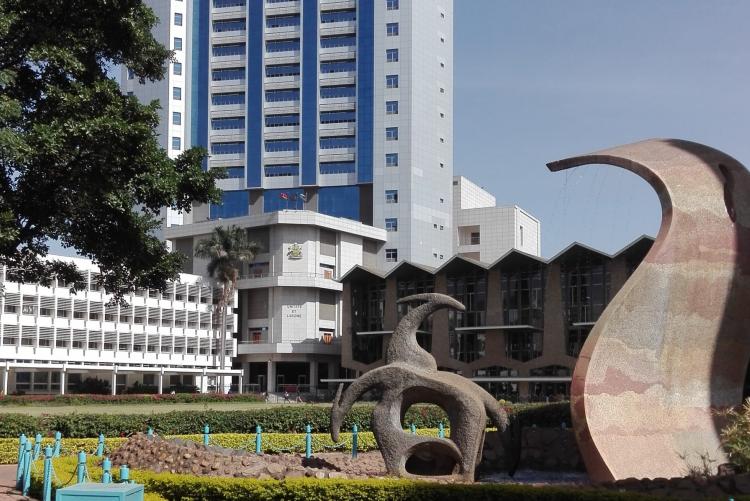Kenya ranked 103 globally with serious hunger levels, as 20 million people remain undernourished

The index measures hunger using four key indicators, including undernourishment, child stunting, child wasting and child mortality.
Kenya is facing serious hunger conditions, with the 2025 Global Hunger Index placing the country at position 103 globally, as 36.8 per cent of its population (about 20 million people) remain undernourished, marking the highest level in 25 years.
The report notes that Kenya’s Global Hunger Index (GHI) score stands at 25.9, categorising the country’s hunger situation as serious. The 2025 GHI, jointly published by Concern Worldwide, Welthungerhilfe and the Institute for International Law of Peace and Armed Conflict (IFHV), reveals a sharp deterioration in food security, with the proportion of undernourished Kenyans rising by 14.6 percentage points since 2016.
More To Read
- Africa risks becoming global hunger epicentre by 2030 if reforms are not put in place, report warns
- 700,000 refugees in Kenya face severe hunger crisis after aid cuts
- UN warns of looming famine in East Africa as conflict, climate shocks deepen hunger crisis
- Foreign aid cuts imperil millions in East Africa as hunger crisis deepens, World Vision warns
- Kenya's food crisis deepens as 2.8 million face starvation following poor rains in 2024
- WHO launches global dashboard to track child mortality and health
The index measures hunger using four key indicators, including undernourishment, child stunting, child wasting and child mortality. Kenya’s latest data show that 36.8 per cent of the population is undernourished, 17.9 per cent of children under five are stunted, 4.5 per cent of children under five are wasted, and 4.0 per cent of children die before their fifth birthday.
The GHI uses a 100-point scale to assess hunger severity, where zero represents no hunger and 100 indicates extreme hunger. Kenya’s score of 25.9 is a regression from 23.1 in 2016, though it remains an improvement from 28.7 in 2008 and 35.7 in 2000.
Between 2000 and 2016, Kenya steadily reduced hunger levels through enhanced nutrition programmes, improved health services and agricultural expansion. This progress saw child stunting drop from 38.6 per cent to 17.9 per cent and child mortality rates halve during the same period. However, the latest data show a troubling reversal, pointing to worsening food insecurity among adults despite gains in child health.
The 2025 GHI attributes this setback to prolonged droughts, high food prices and declining household purchasing power. Between 2019 and 2023, Kenya suffered six consecutive failed or below-average rainy seasons, which devastated crop and livestock production across arid and semi-arid regions.
“The climate crisis is no longer episodic; it has become a constant threat. 2024 was the hottest year on record, and extreme weather events are increasingly devastating food systems,” reads the report.
Economic pressures have further worsened access to food, with a 2024 survey by the Kenya National Bureau of Statistics showing that nearly one in three households in informal settlements reported skipping meals or eating less due to rising costs. Many families are also resorting to cheaper, less nutritious staples to survive.
Similarly, a study by UN agencies found that the cost of a healthy diet rose from Sh113.86 in 2017 to Sh189.48 per person per day in 2024, putting nutritious food beyond reach for many households.
The report also highlights the impact of regional instability, noting that conflict in neighbouring countries has disrupted trade routes and food supplies to Kenya’s border counties, including Turkana, Marsabit and Mandera. Kenya currently hosts nearly 700,000 refugees and asylum seekers from Somalia, Ethiopia and South Sudan, further straining limited resources in already food-insecure communities.
The report also notes that hunger is not evenly distributed across the country. Arid and semi-arid regions, which are home to about 30 per cent of Kenya’s population, account for nearly 70 per cent of those experiencing food insecurity.
Counties such as Turkana, Wajir, Garissa, Kitui, and Makueni are among the hardest hit due to their reliance on rain-fed agriculture and limited access to markets. In agriculturally rich regions such as Trans Nzoia and Uasin Gishu, small-scale farmers face high input costs and low returns, discouraging sufficient production even for household consumption.
Across Sub-Saharan Africa, ten countries have recorded rising hunger levels since 2016, with Kenya among six nations with “extremely alarming” levels of undernourishment alongside the Democratic Republic of Congo, Liberia, Madagascar, Somalia and Zambia.
The GHI report warns that globally, humanitarian funding for food and nutrition has declined, even as the number of people in need continues to rise. It has now called for urgent global action to strengthen resilience against climate shocks, boost agricultural productivity and make healthy diets more affordable.
The report further notes that Kenya is also grappling with deepening poverty and inequality. While the country has made some progress since 2020 when 42.9 per cent of Kenyans were living in poverty, rates remain higher than a decade ago. More than 68 per cent of people facing poverty live in rural areas, which were hardest hit by the worst drought in four decades. In Nairobi, nearly a third of residents in informal settlements live below the poverty line, reflecting widening inequality in urban areas.
The 2025 Global Hunger Index assessed data for 136 countries, but only 123 were ranked due to data availability. Thirteen countries were not ranked owing to insufficient data, though some were classified provisionally by the severity of hunger.
Top Stories Today













































